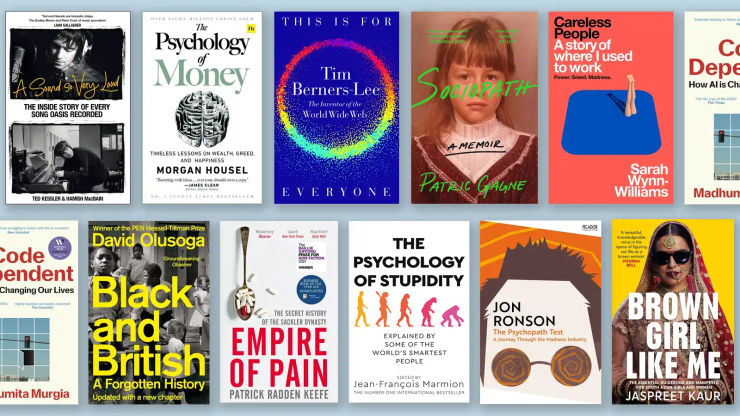Are women really losing the rights we’ve fought so hard for? The UN thinks so. Here’s what we can do next.
Speaker, racial equity consultant and author Sophie Williams on how we regain the progress that has been quietly lost.

In The Glass Cliff, Sophie Williams explores how structural inequality in the workplace disguises itself as the personal failures of women, and how we can change the world of work for the better. Here, she discusses the reversal of women's rights in recent years and what we can do about it.
I remember the first time I realized that we, as women, were in a story of regression, rather than the one of progress I was so used to hearing. It was March of 2023, and I had been selected to be a part of the UK’s delegation at the United Nations’ Commission on the Status of Women – a week-long series of discussions, debates and planning, hosted in New York. The conference opened with a speech from António Guterres, the UN’s secretary general, who said to us, the assembled delegates:
We had years and years of incremental progress, [but] women’s and girls’ rights have stalled now and are going into reverse [. . .] The truth is that half of humanity is largely being left behind; in every region, women are worse off than men, earning less and doing up to ten times more unpaid care work.
I was shocked.
Up until that point, I had been so used to the narrative of progress and positive change – the Girl Power of the nineties and my childhood, developing into the 2020s era of the ‘girl boss’ and ‘SheEO’ (yuck, I know) – that the possibility that we could have stalled hadn’t ever crossed my mind. Let alone that we could have fallen into reverse.
‘I had been so used to the narrative of progress and positive change. . . that the possibility that we could have stalled hadn’t ever crossed my mind. Let alone that we could have fallen into reverse.’
The idea that the hard-won rights of women and girls around the world are not only failing to be respected but are actually being taken away, was repeated time and time again during the week of the conference. From women’s bodily autonomy, to digital safety, to access to education and medical care, the message was consistent and strong throughout: we had spent so much time congratulating ourselves on making progress that we’d forgotten to make sure that we were, actually, still making the progress we were so proud of.
We don’t have to look too hard to see evidence of this rollback in our own lives, and careers. In fact, one place we can spot it easily is in a topic that is very often discussed around International Women's Day – the gender pay gap.
In 2023, it was reported by the Guardian that, instead of closing, the gender pay gap for mothers who are educated beyond GCSE level had in fact widened since the 1970s, with working mothers now earning only 69% of working fathers’ wages. This means the ‘motherhood penalty’ paid by women today is larger than it was forty-five years ago, in 1978, when mothers earned about 72% of the wages of their male parent counterparts. This is a revelation which has led researchers to argue that rather than being the consequence of societal progress, any shrinking of the pay gap between men and women since the 1970s that we might have seen, and even celebrated, ‘has largely been driven by economic factors such as the minimum wage and falling wages for less educated men’. Dr Amanda Gosling, a senior lecturer in economics at the University of Kent told the Guardian, ‘The gap in pay between mothers and fathers looks very similar now as it did in the late 1970s. The story for Gen-Xers is the same for boomers and millennials.’
‘Not only is the disparity between men and women shortchanging women in their careers, the impact of inequality is still being felt at home, too, despite the stories we so often hear about increased equity and labour division in the personal sphere.’
This is all the more shocking when we consider that, on average, mothers are now better educated than fathers. In 1978, only 10% of fathers and 9% of mothers had any post-school education; by 2019, this had risen to 45% and 48% respectively. ‘Arguably, then,’ Gosling said, ‘the current overall gap between the wages of mothers and fathers is understated because it does not control for the fact that mothers are more skilled’.
Not only is the disparity between men and women shortchanging women in their careers, the impact of inequality is still being felt at home, too, despite the stories we so often hear about increased equity and labour division in the personal sphere. As recently as 2022, Lean In’s Women in the Workplace report showed that, in addition to their day jobs, 58% of women in entry-level roles in North America reported being responsible for ‘most or all of their family’s housework and childcare’, compared to just 30% of men at the same level. As women progress in their careers and take on additional responsibilities and professional seniority at work, this expectation in the domestic sphere doesn’t lessen to anything like the degree we might hope, or expect. In fact, at the senior-manager level or above, whilst this figure of domestic responsibility drops to just 13% of men, it only reduces by 6 percentage points for women - landing at 52% of the most senior women in business still reporting being solely, or largely responsible for all of their households childcare and housework tasks.
‘It’s not surprising then that, although having estimated that we were, globally, only 100 years away from global gender equality in 2019, when the United Nations revisited their estimate post-Covid, the collective number stood at 300 years, with the UK alone being as estimated 120 years away from gender equality.’
It’s not surprising then that, although having estimated that we were, globally, only 100 years away from global gender equality in 2019, when the United Nations revisited their estimate post-Covid, the collective number stood at 300 years, with the UK alone being as estimated 120 years away from gender equality.
In order to overcome the hurdles that still face women, first we must be aware of them. As well as celebrating our wins, we must be aware of areas where progress is slower than we’d hope for, and even where ground has been lost. And then we need to work together. We need to insist that the requirement for businesses to report their gender pay gaps (which was paused in 2020 due to Covid, when it could be argued that we needed it most) is expanded to include all UK businesses, not only those with 250 or more employees. We must argue for intersectional data, showing the realities for the most marginalised women, who are all too often made invisible by homogeneous reporting. Only once we know what we’re working both for and against, can we begin to make the progress we need to regain what has been so quietly lost.
The Glass Cliff
by Sophie Williams
The Glass Cliff: a story of a structural inequality disguising itself as the personal failures of women. Have you ever wondered why there are so few success stories of women in business leadership? Or maybe you’ve wondered what life is really like on the other side of The Glass Ceiling? The world of work is supposedly changing, embracing diversity – yet are the opportunities we’re giving to women really equal to those of men? Drawing on almost twenty years of research from around the world, Sophie Williams explores The Glass Cliff phenomenon – whereby women are often only hired in leadership roles when a business is already underperforming, meaning their chances of success are limited before they ever even start.



